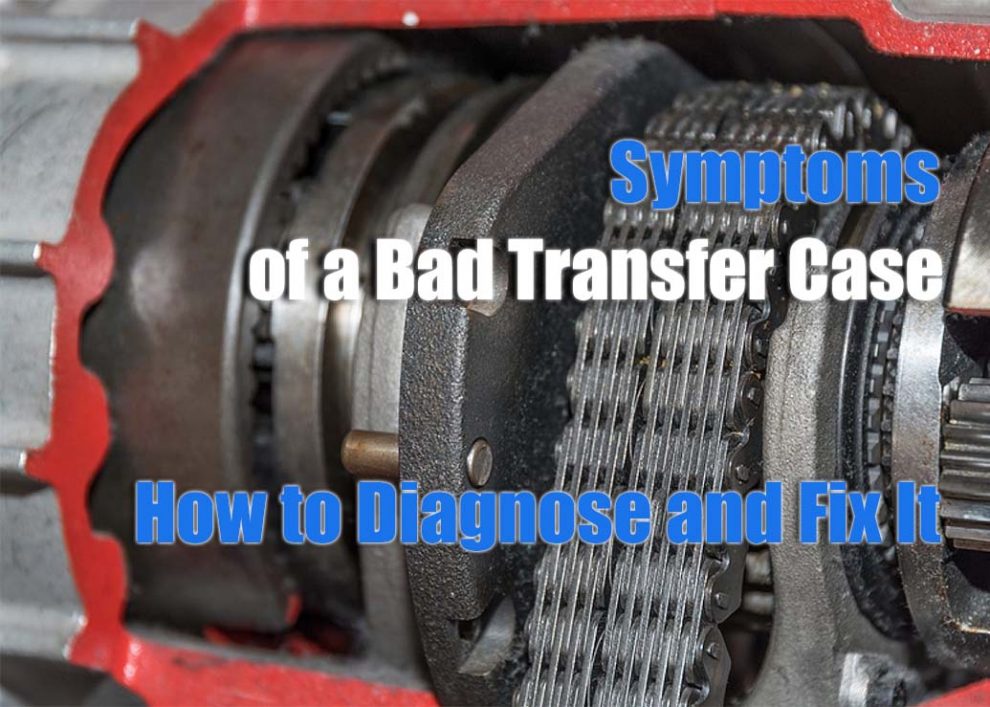When it comes to the drivetrain system of an automobile, one of the most important components is the transfer case. It is responsible for transferring power from the engine to the transmission and ultimately to the wheels. And when it starts malfunctioning, you need to pay attention fast since a bad transfer case can lead to considerable damage in other parts of your vehicle as well. In this comprehensive guide, we will cover everything about symptoms of a bad transfer case and how you can diagnose and fix them so that your car runs smoothly again. We’ll take a detailed look at what exactly causes a bad transfer case, what are its common symptoms, methods for diagnosing it accurately and finally provide practical solutions for repairing or replacing it.
What Is a Transfer Case?
A transfer case is an integral part of any four-wheel-drive or all-wheel-drive vehicle. It’s essentially a gearbox located between your vehicle’s transmission system and driveshaft that helps deliver power from your engine to each axle on demand via its own set of gears which are usually engaged manually with switches in driver’s cab or through an electronic signal from Vehicle Control Module (VCM). The primary function of this device is to provide torque multiplication while reducing speed – thus allowing larger engines more control when driving in snow or off-road conditions by providing better traction on all four wheels at once.
What Causes a Bad Transfer Case?
 There are several different elements that can cause issues with your transfer case such as lack of maintenance leading to wear and tear on gears and shafts inside it; damaged seals due to extreme weather conditions like heat and cold; inadequate lubrication resulting in overheating; or mechanical failure due to loose screws/bolts etcetera. No matter what might be causing its malfunctioning state, a bad transfer case must never be left unattended as its failure will also affect other parts connected with it like transmission system – leading up costly repairs further down the line if not diagnosed early enough.
There are several different elements that can cause issues with your transfer case such as lack of maintenance leading to wear and tear on gears and shafts inside it; damaged seals due to extreme weather conditions like heat and cold; inadequate lubrication resulting in overheating; or mechanical failure due to loose screws/bolts etcetera. No matter what might be causing its malfunctioning state, a bad transfer case must never be left unattended as its failure will also affect other parts connected with it like transmission system – leading up costly repairs further down the line if not diagnosed early enough.
Common Symptoms
The signs indicating towards wear and tear in any particular component may vary depending upon make/model but some common signs indicating towards problems with your car’s transfer case include: grinding/whining noises while shifting between two wheel drive (2WD) and four wheel drive (4WD); odd vibrations emitted during operation; leaks around seals/gaskets connected with TC housing; difficulty controlling car while accelerating or braking abruptly etcetera – all these being major warning signs that something isn’t quite right underneath hood’s cover! If left unchecked they could potentially result in major damage requiring expensive repairs later on down road too so best option would be to detect problem early and take necessary steps so as to avoid further damage.
Diagnosing and Fixing a Bad Transfer Case
The first step in diagnosing a bad transfer case is to inspect its physical condition and look for any visible signs of wear and tear like broken/damaged seals, loose screws/bolts, or leaks. Once that’s done, then you can proceed with testing it by turning on 4WD mode while driving on flat surface to check if there’s any difference in noise level when compared 2WD mode – which usually indicates malfunctioning TC gears and shafts. If the problem still persists then it may be time for replacing entire unit itself since its individual parts are hard to come by and not always cost-effective solution either!
In certain cases, fluid changes might help too but that depends entirely upon make/model of car as well so best option would be consulting a professional mechanic who can accurately assess situation here before making final decisions about repairs or replacement options available. Lastly, don’t forget about other components connected with transfer case such as properly installed cold air intake system – like Best Cold Air Intake for Mazda RX-8 which you can read more about in another our article – because these too have direct implications on overall performance of your vehicle’s drivetrain system!
Conclusion
In conclusion, a bad transfer case should never be overlooked since it could potentially lead up even more expensive repairs later down road if not diagnosed and corrected in timely fashion. The key lies in detecting problems early through inspection and tests before taking necessary steps towards repairing or replacing entire unit depending upon severity level here! Hopefully now you have better understanding about symptoms of a bad transfer case and how to diagnose and fix them so your car runs smoothly without any major issues.


Add Comment